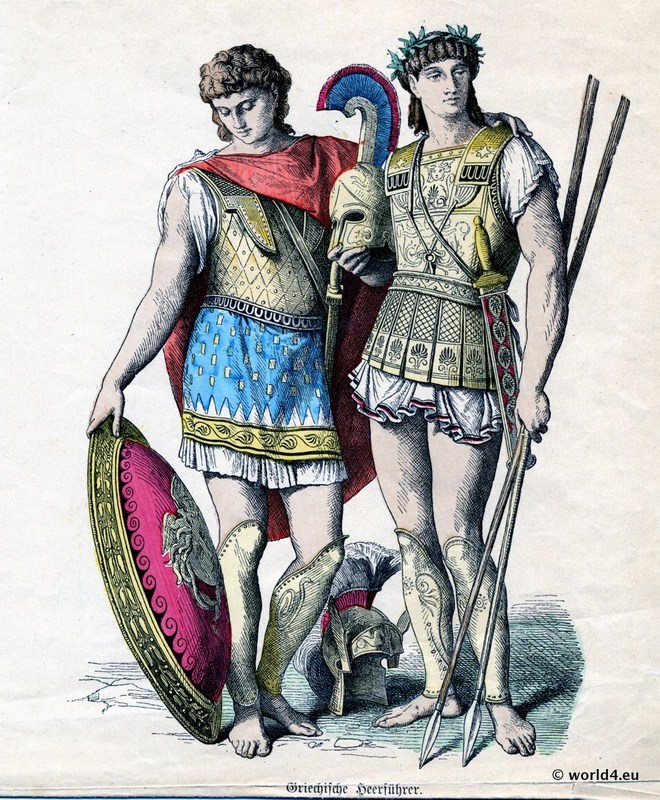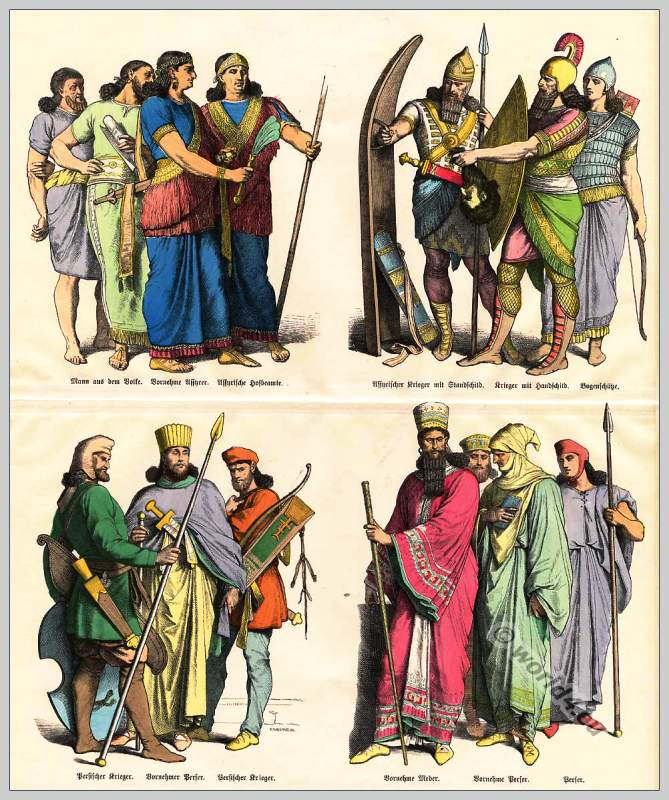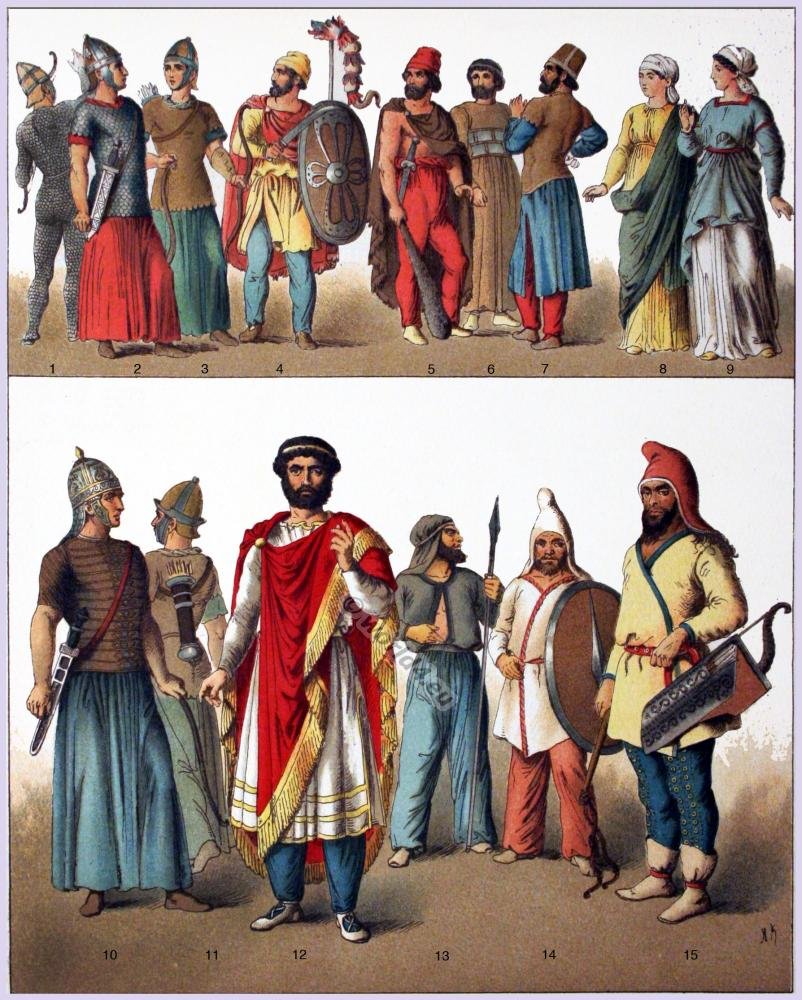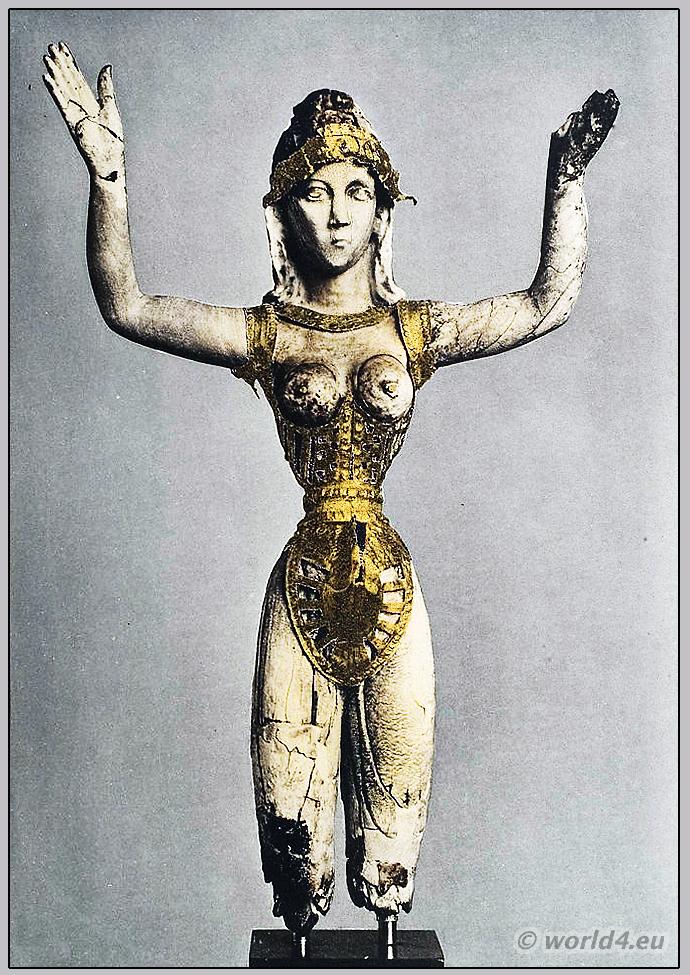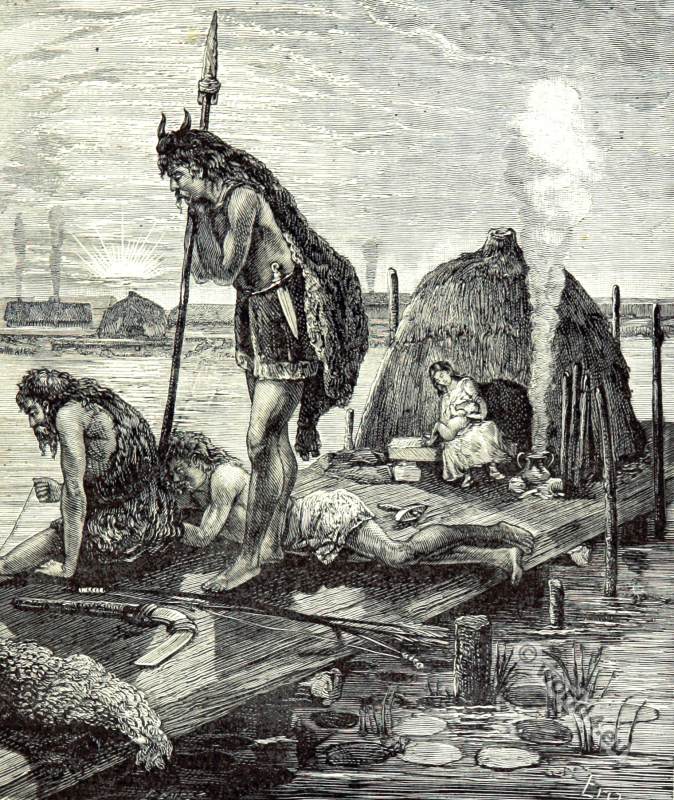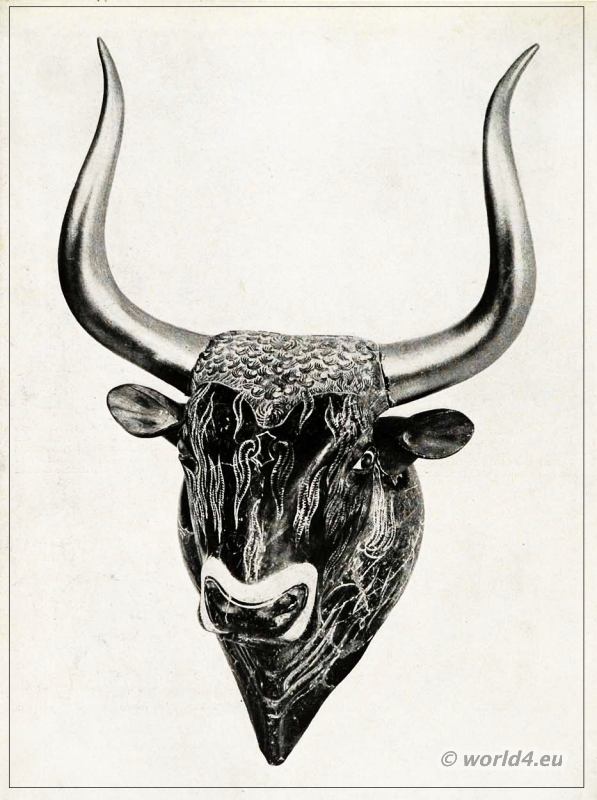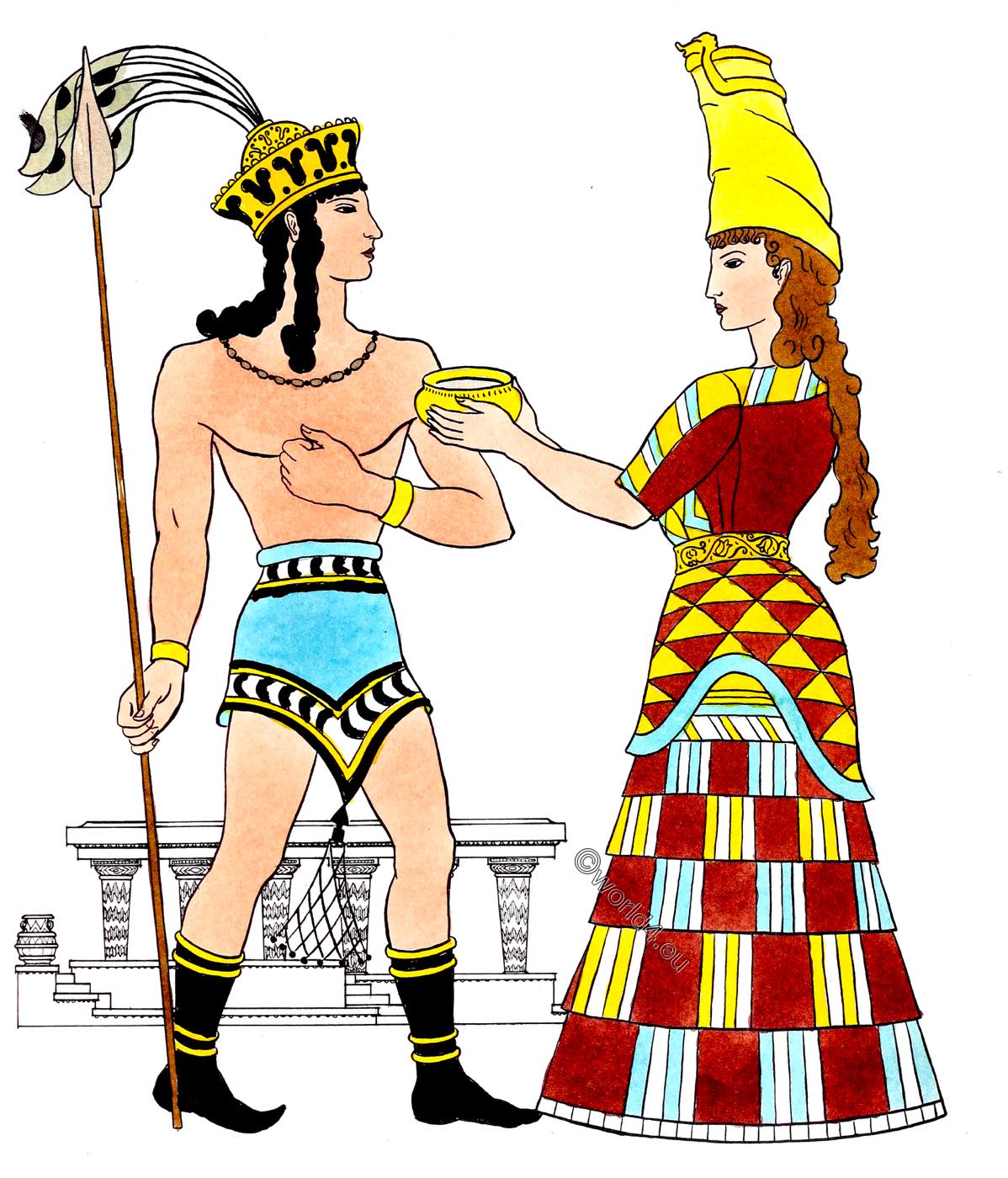
The Cretan costume of Antiquity. 2000 BC. – 1200 BC.
CRETAN – PLATE NO. 7
Long ago on the island of Crete there lived a group of people called Cretans. Little is known of their origin or early life. Remains of their houses, jewelry, statues, and paintings have been dug up on the island and it is from these excavations that the knowledge of Cretan costume is derived.
The young man has long hair combed to form a short fringe across the forehead. He is wearing a hat with turned-up brim and with peacock feathers fastened to its crown. This hat could have been made of metal or leather and decorated with the simple design. The top part of his body is bare, except for the chain on his shoulders and the bracelets on his wrists. Cretan men, it would appear, walked about without shirts and wore beautiful, finely made jewelry.
The skirt could have been made of material such as linen or wool. It is probably wrapped around the hips and held in place by the girdle, which is a heavy roll of material. Sometimes men wore a high metal belt similar to that of the women. We do not know the purpose of the peculiar triangular tassel that hangs from, his skirt. Maybe it was worn on special holidays. Probably the Cretans went barefoot, very often. The shoes this man is wearing are made of leather and have toes that turn up a little. The shoes (since there are no lacings) are held on by leather straps which tie around the ankles and on top of the shoes.
The woman in the picture is dressed much more elaborately. She is wearing a short jacket that has been cut, sewn, and fitted like our clothes are today. It is a stiff little coat, laced all the way down the front. Ancient people wore clothes not so much to hide their bodies as to dress them up, show them off and, of course, protect them from the weather. You can see that the woman is wearing a skirt that looks very much like one our grandmothers might have worn. For all we know, it might have been made the same way. The sections around the skirt are extra pieces called flounces and are like those used today as decorations on women’s clothes. Over the hoop skirt, as we might call it, she has donned a short apron that is curved on the sides so that it hangs down in front and back and covers the waistline where the skirt and jacket meet. She is wearing a metal belt which gives her waist a small, pinched-in appearance.
Her hair is combed like her companion’s. She wears a high hat which is formed by winding cloth or linen around a framework that could have been made of light wood or wire.
The only jewelry on the woman’s costume is a metal snake that is coiled around the top of the hat and which rests its head at the front of the crown.
Source: Museum Extension Project. History of Costume.

Related
Discover more from World4 Costume Culture History
Subscribe to get the latest posts sent to your email.

